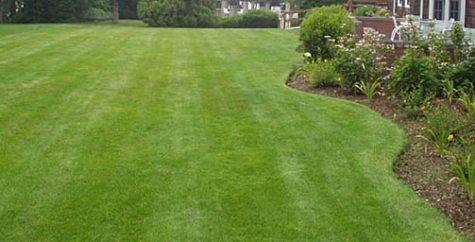Keeping Ticks Out of Your Yard
Deer ticks are most abundant in the woods where hosts for the tick flourish and ticks find high humidity levels necessary for survival. On lawns, most deer ticks (82%) have been recovered within 9 feet of the lawn edge, especially areas adjacent to woods, stonewalls, or ornamental plantings. Fewer ticks are found in the sunny, manicured areas of the lawn. Ticks may also be found in groundcovers such as Pachysandra.
Create a tick safe zone by altering the landscape to increase sunlight, reduce tick habitat and discourage rodent hosts. Create a clearly defined, manicured border. A dry wood chip, tree bark, mulch, or gravel barrier between woods and lawn can reduce tick migration into the lawn. The removal of leaf litter at the lawn perimeter also can help reduce the number of I. scapularis nymphs on the lawn. Landscape modifications include:
- Keep grass mowed.
- Prune trees, mow the lawn, and clear leaf litter and brush, especially along edges of the lawn, stonewalls, and driveways.
- Move play sets away from the woodland edge.
- Restrict groundcover in areas frequented by family.
- Adopt some landscaping practices such as gravel pathways, mulches, decking, stone, tile, and other hardscapes around the home.
- Wildflower meadows, herbal gardens, etc. have very few ticks and may be an acceptable alternative to grass in some areas.
Treating the yard and outdoor kennel area, if any, is an important tool in the arsenal against ticks. There are products containing fenvalerate, that can be used to spray the outdoor area. According to the CDC, Fenvalerate is not harmful to the environment, it is however, toxic to animals, pets, and people, so please use common sense.
- Dog Training School Pics by shirleytwofeathers - 1 Comment
- Some Cute Dog Quotes by shirleytwofeathers - No Comment
- Training Do’s and Don’ts by shirleytwofeathers - No Comment
- Holiday Toxins and Dangers by shirleytwofeathers - No Comment
- Four Good Reasons To Train Your Dog by shirleytwofeathers - No Comment
John kleist: Dog Training School Pics




Leave a Reply